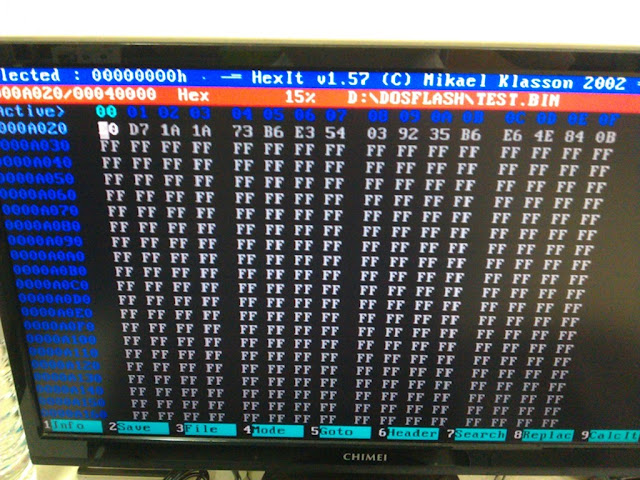ak475671 發表於 2011-8-12 21:08
超級版主你好6 w; ^; K. H, N- n! e- m7 G
是這樣的我的主機是舊機沒有HDMI光碟機是明碁的我想玩T片但我都沒有改過機如果我想玩目前市面 ...
ak475671 發表於 2011-8-12 21:08
超級版主你好6 w; ^; K. H, N- n! e- m7 G
是這樣的我的主機是舊機沒有HDMI光碟機是明碁的我想玩T片但我都沒有改過機如果我想玩目前市面 ...
ak475671 發表於 2011-8-12 21:418 M( b" @1 j# ]7 ?* }
超級本主你好) b$ q# Y3 U/ p+ R2 Q
是的我是想要自刷LT+1.91對360軟改很有興趣所以想先了解一下先自己動手試看看以版主的意思是 ...
ak475671 發表於 2011-8-15 21:211 B# p& H/ P5 g; y! I# H
超級版主你好^^
我打算自刷LT+1.91如果沒成功可以拿去你那裡處理嗎?! p: f1 @/ M: u; ?7 c' v9 N
謝謝^^
ak475671 發表於 2011-8-20 14:19) `7 _. K1 p" C) K; ?
版主你好^^: Y( [7 J P8 X! d
我測試了1.86要刷LT的時候要提取DVDKEY的時候沒辦法提key提完key之後出現一個問題因該是光碟機 ...
ak475671 發表於 2011-8-21 17:46
^^版主你好; x* H& F8 V/ | n- b
我有按BENQ UNLOCK這個選項不過還是沒辦法解鎖不知道為什麼因為我是P4主機然後使用網路上所說的 ...
ak475671 發表於 2011-8-22 13:031 Q% v+ A2 c5 e) U
版主你好0 K* b4 [' {7 T9 d( m- E
版主知道哪裡有教學嗎使用DOS提KYE的過程不是很了解不知道有沒有教學可以參考的呢
另外你說他提取 ...
 LDS DG-16D2S 74850C" over UART -> "LiteOn Key V1 (DvdKey)") c( N7 {3 h# q6 S3 E
LDS DG-16D2S 74850C" over UART -> "LiteOn Key V1 (DvdKey)") c( N7 {3 h# q6 S3 E LDS DG-16D2S 83850C" over SATA -> "LiteOn Key V2 (FreeKey)"0 O: m7 v% g. v$ `
LDS DG-16D2S 83850C" over SATA -> "LiteOn Key V2 (FreeKey)"0 O: m7 v% g. v$ ` LDS DG-16D4S 9504" over SATA -> "LiteOn Key V3 (Tarablinda)"
LDS DG-16D4S 9504" over SATA -> "LiteOn Key V3 (Tarablinda)" LDS DG-16D4S 9504" -> "Read Flash" this is considered risky!
LDS DG-16D4S 9504" -> "Read Flash" this is considered risky! LDS DG-16D4S 9504" -> "Write Flash" this is considered risky!$ A1 y2 ^2 U9 c3 ~1 s5 g# k
LDS DG-16D4S 9504" -> "Write Flash" this is considered risky!$ A1 y2 ^2 U9 c3 ~1 s5 g# k LDS DG-16D4S 9504" -> "Erase Flash" this is considered risky!
LDS DG-16D4S 9504" -> "Erase Flash" this is considered risky! LDS DG-16D2S 74850C" or a "
LDS DG-16D2S 74850C" or a " LDS DG-16D2S 83850C" -> "LiteOn Erase V1/V2"
LDS DG-16D2S 83850C" -> "LiteOn Erase V1/V2" rogram Compatibility Assistant" warning message
rogram Compatibility Assistant" warning message


 * B/ O% f+ G5 S9 ]3 T5 ]+ q4 v4 h
* B/ O% f+ G5 S9 ]3 T5 ]+ q4 v4 h / K& P! c3 @ D( {# T6 ?- G
/ K& P! c3 @ D( {# T6 ?- G + ^* M4 J+ M& }' i
+ ^* M4 J+ M& }' i| 歡迎光臨 黑皮論壇(手機維修/電玩維修/電腦維修) (http://happytvgame.com/) | Powered by Discuz! X3.2 |